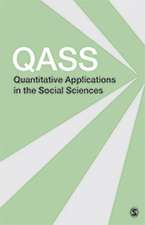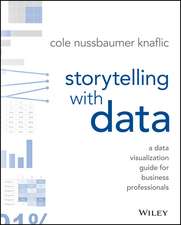Interaction Effects in Multiple Regression: Quantitative Applications in the Social Sciences, cartea 72
Autor James Jaccard, Robert Turrisien Limba Engleză Paperback – 27 mai 2003
Din seria Quantitative Applications in the Social Sciences
-
 Preț: 323.09 lei
Preț: 323.09 lei -
 Preț: 285.10 lei
Preț: 285.10 lei -
 Preț: 285.33 lei
Preț: 285.33 lei -
 Preț: 274.06 lei
Preț: 274.06 lei -
 Preț: 285.37 lei
Preț: 285.37 lei -
 Preț: 321.52 lei
Preț: 321.52 lei -
 Preț: 330.81 lei
Preț: 330.81 lei -
 Preț: 322.61 lei
Preț: 322.61 lei -
 Preț: 321.79 lei
Preț: 321.79 lei -
 Preț: 323.15 lei
Preț: 323.15 lei -
 Preț: 273.46 lei
Preț: 273.46 lei -
 Preț: 275.42 lei
Preț: 275.42 lei -
 Preț: 277.33 lei
Preț: 277.33 lei -
 Preț: 322.06 lei
Preț: 322.06 lei -
 Preț: 286.18 lei
Preț: 286.18 lei -
 Preț: 285.71 lei
Preț: 285.71 lei -
 Preț: 322.06 lei
Preț: 322.06 lei -
 Preț: 321.52 lei
Preț: 321.52 lei -
 Preț: 322.30 lei
Preț: 322.30 lei -
 Preț: 285.47 lei
Preț: 285.47 lei -
 Preț: 322.61 lei
Preț: 322.61 lei -
 Preț: 321.79 lei
Preț: 321.79 lei -
 Preț: 323.15 lei
Preț: 323.15 lei -
 Preț: 323.36 lei
Preț: 323.36 lei -
 Preț: 322.41 lei
Preț: 322.41 lei -
 Preț: 323.42 lei
Preț: 323.42 lei -
 Preț: 322.61 lei
Preț: 322.61 lei -
 Preț: 284.99 lei
Preț: 284.99 lei -
 Preț: 285.47 lei
Preț: 285.47 lei -
 Preț: 284.99 lei
Preț: 284.99 lei -
 Preț: 289.18 lei
Preț: 289.18 lei -
 Preț: 287.82 lei
Preț: 287.82 lei -
 Preț: 316.12 lei
Preț: 316.12 lei -
 Preț: 288.96 lei
Preț: 288.96 lei -
 Preț: 316.71 lei
Preț: 316.71 lei -
 Preț: 314.98 lei
Preț: 314.98 lei -
 Preț: 317.26 lei
Preț: 317.26 lei -
 Preț: 314.60 lei
Preț: 314.60 lei -
 Preț: 289.95 lei
Preț: 289.95 lei -
 Preț: 289.18 lei
Preț: 289.18 lei -
 Preț: 315.36 lei
Preț: 315.36 lei -
 Preț: 314.98 lei
Preț: 314.98 lei -
 Preț: 314.38 lei
Preț: 314.38 lei -
 Preț: 316.33 lei
Preț: 316.33 lei -
 Preț: 316.51 lei
Preț: 316.51 lei -
 Preț: 314.76 lei
Preț: 314.76 lei -
 Preț: 288.41 lei
Preț: 288.41 lei -
 Preț: 316.51 lei
Preț: 316.51 lei
Preț: 289.56 lei
Nou
Puncte Express: 434
Preț estimativ în valută:
55.41€ • 57.64$ • 45.75£
55.41€ • 57.64$ • 45.75£
Carte tipărită la comandă
Livrare economică 14-28 aprilie
Preluare comenzi: 021 569.72.76
Specificații
ISBN-13: 9780761927426
ISBN-10: 0761927425
Pagini: 104
Ilustrații: bibliog references, index
Dimensiuni: 140 x 216 x 6 mm
Greutate: 0.13 kg
Ediția:Second Edition
Editura: SAGE Publications
Colecția Sage Publications, Inc
Seria Quantitative Applications in the Social Sciences
Locul publicării:Thousand Oaks, United States
ISBN-10: 0761927425
Pagini: 104
Ilustrații: bibliog references, index
Dimensiuni: 140 x 216 x 6 mm
Greutate: 0.13 kg
Ediția:Second Edition
Editura: SAGE Publications
Colecția Sage Publications, Inc
Seria Quantitative Applications in the Social Sciences
Locul publicării:Thousand Oaks, United States
Cuprins
Series Editor's Introduction
Preface
Chapter 1: Introduction
The Concept of Interaction
Simple Effects and Interaction Contrasts
Simple Effects
Interaction Contrasts
A Review of Multiple Regression
The Linear Model
Hierarchical Regression
Categorical Predictors and Dummy Variables
Predicted Values in Multiple Regression
Transformations of the Predictor Variables
Overview of Book
Chapter 2: Two-Way Interactions
Regression Models with Product Terms
Two Continuous Predictors
The Traditional Regression Strategy
The Form of the Interaction
Interpreting the Regression Coefficients for the Product Term
Interpreting the Regression Coefficients for the Component Terms
Significance Tests and Confidence Intervals
Multicollinearity
Strength of the Interaction Effect
A Numerical Example
Graphical Presentation
A Qualitative Predictor and a Continuous Predictor
A Qualitative Moderator Variable
A Continuous Moderator Variable
More Than Two Groups for the Qualitative Variable
Form of the Interaction
Summary
Chapter 3: Three-Way Interactions
Three Continuous Predictors
Qualitative and Continuous Predictors
A Continuous Focal Independent Variable
A Qualitative Focal Independent Variable
Qualitative Variables with More than Two Levels
Summary
Chapter 4: Additional Considerations
Selected Issues
The BiLinear Nature of Interactions for Continuous Variables
Calculating Coefficients of Focal Independent Variables at Different Moderator Values
Partialing the Component Terms
Transformations
Multiple Interaction Effects
Standardized and Unstandardized Coefficients
Metric Properties
Measurement Error
Robust Analyses and Assumption Violations
Within-Subject and Repeated-Measure Designs
Ordinal and Disordinal Interactions
Regions of Significance
Confounded Interactions
Optimal Experimental Designs and Statistical Power
Covariates
Control for Experimentwise Errors
Omnibus Tests and Interaction Effects
Some Common Misapplications
Interaction Models with Clustered Data and Random Coefficient Models
Continuous Versus Discrete Predictor Variables
The Moderator Framework Revisited
References
Notes
About the Authors
Preface
Chapter 1: Introduction
The Concept of Interaction
Simple Effects and Interaction Contrasts
Simple Effects
Interaction Contrasts
A Review of Multiple Regression
The Linear Model
Hierarchical Regression
Categorical Predictors and Dummy Variables
Predicted Values in Multiple Regression
Transformations of the Predictor Variables
Overview of Book
Chapter 2: Two-Way Interactions
Regression Models with Product Terms
Two Continuous Predictors
The Traditional Regression Strategy
The Form of the Interaction
Interpreting the Regression Coefficients for the Product Term
Interpreting the Regression Coefficients for the Component Terms
Significance Tests and Confidence Intervals
Multicollinearity
Strength of the Interaction Effect
A Numerical Example
Graphical Presentation
A Qualitative Predictor and a Continuous Predictor
A Qualitative Moderator Variable
A Continuous Moderator Variable
More Than Two Groups for the Qualitative Variable
Form of the Interaction
Summary
Chapter 3: Three-Way Interactions
Three Continuous Predictors
Qualitative and Continuous Predictors
A Continuous Focal Independent Variable
A Qualitative Focal Independent Variable
Qualitative Variables with More than Two Levels
Summary
Chapter 4: Additional Considerations
Selected Issues
The BiLinear Nature of Interactions for Continuous Variables
Calculating Coefficients of Focal Independent Variables at Different Moderator Values
Partialing the Component Terms
Transformations
Multiple Interaction Effects
Standardized and Unstandardized Coefficients
Metric Properties
Measurement Error
Robust Analyses and Assumption Violations
Within-Subject and Repeated-Measure Designs
Ordinal and Disordinal Interactions
Regions of Significance
Confounded Interactions
Optimal Experimental Designs and Statistical Power
Covariates
Control for Experimentwise Errors
Omnibus Tests and Interaction Effects
Some Common Misapplications
Interaction Models with Clustered Data and Random Coefficient Models
Continuous Versus Discrete Predictor Variables
The Moderator Framework Revisited
References
Notes
About the Authors
Notă biografică
Dr. James Jaccard is Professor of Social Work at New York University Silver School of Social Work. He received his doctoral degree from the University of Illinois, Urbana, in 1976. Dr. Jaccard¿s research focuses on adolescent and young adult problem behaviors, particularly those related to unintended pregnancy and substance use, broadly defined. He has developed parent-based interventions to teach parents how to more effectively communicate and parent their adolescent children so as to reduce the risk of unintended pregnancies and problems due to substance use. Dr. Jaccard has written numerous books and articles on the analysis of interaction effects in a wide range of statistical models and teaches advanced graduate courses on structural equation modeling. He has written influential articles on the issue of arbitrary metrics in social science research. Dr. Jaccard also has written about theory construction and how to build conceptual models in a book published by Guilford Press.

























